Forbidden Knowledge and the Aspen-Body
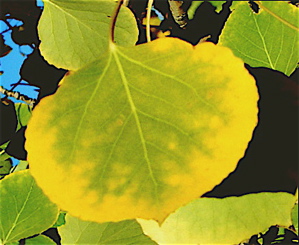 Western man is trained to see himself as an individual; his manhood is contingent upon an ability to make his way in the world. A stiff upper lip, a chest thrust out, swallowing emotions of loneliness, the requisite need to prove one’s worth to family and world, the desperate prayer for grace from a judging God sitting in Heaven…all contribute to and make for our Occidental sense of the individual Self.
Western man is trained to see himself as an individual; his manhood is contingent upon an ability to make his way in the world. A stiff upper lip, a chest thrust out, swallowing emotions of loneliness, the requisite need to prove one’s worth to family and world, the desperate prayer for grace from a judging God sitting in Heaven…all contribute to and make for our Occidental sense of the individual Self.
We are a nation, a society, and a culture of individualism. The tension between the individual and the collective has long been with us however. E.E. Cummings said it beautifully this way:
To be nobody but yourself in a world which is doing its best, night and day, to make you everybody else means to fight the hardest battle which any human being can fight; and never stop fighting.
This noble statement captures much of the essence of what I reference as wild resiliency: our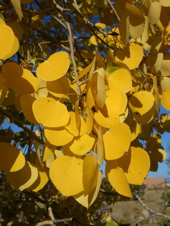 willingness and capacity to be loyal to our own deep Self. And it is the Aspen Body that is capable of initiating us into an essential portion of our deep, primeval and imaginative nature. These portions of our nature, in the modern West, lie in the territory of forbidden knowledge and can be summarized thusly:
willingness and capacity to be loyal to our own deep Self. And it is the Aspen Body that is capable of initiating us into an essential portion of our deep, primeval and imaginative nature. These portions of our nature, in the modern West, lie in the territory of forbidden knowledge and can be summarized thusly:
We are not separate. We are a family, a collective, a community with all of Life. And not only are we a community, but you and I are as well. Goethe said it this way:
No living thing is unitary in nature; every such thing is a plurality. Even the organism which appears to us as an individual exists as a collection of independent entities.
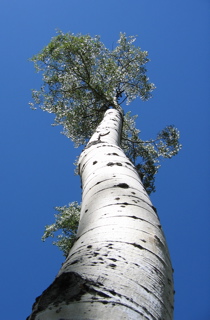 This is as true of us as it is of the Aspen leaf. We would die without the billions of bacteria that aid our digestion of food. In fact, we commune daily with one to two pounds of bacteria and fungi and…lice…, which happily call our mobile bodies home in exchange for all sorts of services, such as keeping our eyelashes ‘clean’ and our skin renewing.
This is as true of us as it is of the Aspen leaf. We would die without the billions of bacteria that aid our digestion of food. In fact, we commune daily with one to two pounds of bacteria and fungi and…lice…, which happily call our mobile bodies home in exchange for all sorts of services, such as keeping our eyelashes ‘clean’ and our skin renewing.
The mythology of the heroic individual however, has so pervaded our unconscious minds and fragmented our thinking that we are in danger of self-destruction for want of balancing truths: i.e. the paradoxical, collective, and ecological nature of the Self.
The self is, after all, a scalable construction of imaginal boundaries, just as is the ‘corporation’. Just ask the Aspen Body, the Aspen tree, or the ramet, as biologists reference the single shoot or solo sprout — arising from the massive root system of the larger organism. It knows that it thrives but through the grace of community while we modern humans see the above ground structure of the ‘tree’ and think that is the individual, the self. We would be in no less error to think of the leaf as the self or as the organism. Here is an image that more closely approximates the ‘organism’.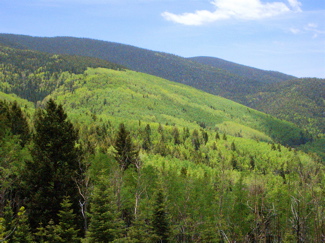
Aspen Groves, you see, scientists now believe to be the largest individual organism on the planet. (I propose an alternative view here.) It turns out that Aspens dwarf the redwood and the whale, and even the massive and extensive mycelia networks previously thought to be the largest organisms. (see here) And Pando, an Aspen grove in Utah, is now thought to be 80,000 to one million years old. (Yes!) But the Aspen Body is not yet done with our re-education, turning us toward a biognosis (wisdom knowledge) of Life. Nope.
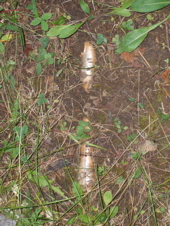 For you see, the Aspen Grove arises out of this root system, lying below and out of our ordinary vision, awareness and imagination. The larger organism is, like Life, invisible to us except through and as we gain awareness and biognosis of how Life actually operates and sustains itself. Interestingly, this corresponds with the world’s perennial philosophies, Indigenous traditions, and with particle physics, in which the visible world is recognized to arise out of and be supported by an unseen ‘realm.’
For you see, the Aspen Grove arises out of this root system, lying below and out of our ordinary vision, awareness and imagination. The larger organism is, like Life, invisible to us except through and as we gain awareness and biognosis of how Life actually operates and sustains itself. Interestingly, this corresponds with the world’s perennial philosophies, Indigenous traditions, and with particle physics, in which the visible world is recognized to arise out of and be supported by an unseen ‘realm.’
Further extending this correspondence, is the fact that our Aspen can no more live without mutualistic relationships with various bacteria and fungi (mushrooms being the sexual organ of the mycelia species), than can you or I live without the bacteria in our guts.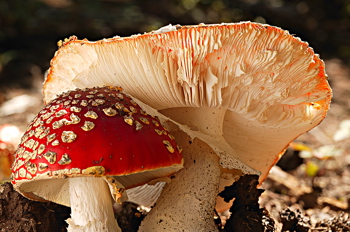
So where does the Self begin or end? And who or what is the self? Who are you? What is this thing we call a self?
Today’s challenges arising out of the confluences of a shrinking globe, climatic destabilization, technological revolutions, bacterial resistance to antibiotics, clashing fundamentalist world views, social alienation, massive human migrations… these can no more be solved through fragmented though clever thinking than can an individual human being procreate.
A different world view is called for, a transformational one, one with ancient and primeval roots that is yet strong and healthy and hardy, one that evokes biological and mythic images of wholeness and of diversity and of individual beauty.
I believe that the Aspen-Body is such an image for our time.
To live with a knowledge and experience, a vision, of the unity of all life is to conduct one’s affairs, one’s business, and one’s national policies from a very different set of values and percepts than it is to go through life proving your worth. Life becomes about cooperation rather than domination, and it become about honoring the wholeness and potentiality and health of your own Self.
What would it mean for me, for you, to live out of the largeness of our Self, as opposed to living out of the smallness of our constructed egos?
I warned you this was forbidden knowledge.
[Alan Watts has a wonderful little book addressing this entitled: The Book: On the Taboo Against Knowing Who You Are]

Marc Choyt
10/20/2007 at 8:31 pmLarry,
What limitations do you see, if any, in the metaphor of the aspen, a tree, to the trajectory of a human life? In other words, where does this metaphor start to be stretched beyond its usefulness.
Second, if the hero is no longer that helpful, agreed. This archetype was constellated either at war with the Mother (matter), the heroic; or her Child or her Husband. The hero also = patriarchies.
Yet many of those who exemplified the forbidden knowledge actually are considered “heroes” or at least put in that category by Campbell.
What does the new mythology look like in terms of story… plant life?
Larry Glover
10/24/2007 at 11:43 amThanks for the great questions, Marc; and none deserving of a short reply. But here goes.
First, the Aspen Body for me is a biological and ecological image of the mythic and mystical Tree of Life. It’s usefulness as such will of course be personal… and your question suggests I may be pushing that boundary for you…
I’m operating on the idea that we require a grounding and vitalization of the mythic image in the concrete and tangible. And I’ve yet to encounter anyone who does not ‘love’ aspen trees.
Re. Campbell and “heroes,” my reading of the ‘heroes journey’ is that the ‘boon’ gained is ultimately self knowledge… i.e. say a remembering of ‘wholeness’, if you will, with the challenge then being to share that new (re-found awareness) with the larger community.
That we reverence those who offer us a re-memberence of such knowledge on the one hand, and kill them with the other (Christ, MLK, John Kennedy…) is of course the old story of the wound perpetuating itself, seeking its own life, self, identity, story…. So I would distinguish Campbell’s Hero’s Journey from the incomplete journey of those whom become stuck in their own falsely heroic self-importance….
What I am trying to suggest, contrary to some, is that the mythic heroes journey is not necessarily pathological (or even necessarily patriarchal), but that, as a Western tradition, the emphasis on the individual it has left us with is indicative of what I consider to be the ‘universal wound,’ i.e. separation from the wholeness of Self. The ‘making’ of a Western Man has required just this initiation into and a worship of a living death.
That we individuate in some fashion is a biological and cultural mandate. That we honor our ‘ancestry’ and the supporting community of life has morphed into the masculine “I did it myself!” into ‘commerce’ as ruthlessness and predatory selfishness and a framing of resource accessibility as a ‘death tax.’ (See Lakoff’s work: https://www.rockridgeinstitute.org/people/lakoff)
And so now we are back to the Aspen and your last question: What does the new mythology look like in terms of story… plant life?
My understanding of the new biology is that thinking in terms of ‘plant’ and ‘animal’ is breaking down in the face of ‘creatures’ who can be said to be neither, either or both. Say a mobile being with chlorophyll who can either generate its own food… or can also obtain by ‘eating’ others…. The distinction is no longer scientifically useful… and I suggest that in the ‘new mythology’, all life is family, we are a community, the Self is constructed of many selfs in the way a body is constructed of cells…
And a body that does not honor the health of the individual cell is a body in trouble, as is a body in which each cell behaves as if it had no community role or obligation.
Kent
10/27/2007 at 11:37 pmSorry to be late jumping into this discussion. For me, the limits of the “Aspen metaphor” begin to appear around the time I realize all those trees within the organism are identical. They grow at the same rate, they color their leaves the same colors, they drop them at the same time and reacquire them at the same time. How could an Aspen have a hero’s journey unless it somehow acquired something individual, something unique? And, if it did, would that individual self be nothing more than an illusion? And, if the journey leads to self-knowledge, is the knowledge an illusion since the self is one? Pretty easy to make yourself nuts following that chain of thought.
Mostly, I think it is unnecessary to push the limits of the metaphor yet. There will time for that after several millions of people begin to see themselves, their fellow sentient beings and all creation as Aspens, wildly resilient.
Educating for Thrivability « wild resiliency blog!
11/24/2007 at 2:57 pm[…] thrive-abilty is contingent upon our ability to remember and to reclaim the forbidden knowledge that is our birthright. It is that transformation thing again: Except ye become as little […]
Foreplay Can Begin With a Dishtowel! « wild resiliency blog!
11/28/2007 at 5:51 am[…] imprisoning us within a self-imposed isolation and separation from the world of our belonging. The forbidden knowledge is that we arise out of and are embedded within a world of Oneness in which the duality of the […]
Intelligence in Nature: Chimps vs. Humans « wild resiliency blog!
12/08/2007 at 2:27 pm[…] talk to the Aspen Trees for Christ ‘s sake! They know the forbidden knowledge, that all our great problems are but symptoms of the same wound, the very same personal and […]
Change Hardiness & Learning Agility: What the Aspen Know « wild resiliency blog!
01/06/2008 at 9:56 pm[…] For additional information see the post on this blog: Forbidden Knowledge and the Aspen Body […]
The Power of McCain’s Religious Worldviews « wild resiliency blog!
05/08/2008 at 5:58 pm[…] suggest both would do well to go hang out in an Aspen Grove for a bit. They might discover some Forbidden Knowledge that would change their lives, and perhaps even the […]
anil20
06/20/2008 at 5:35 amFor me, the limits of the “Aspen metaphor” begin to appear around the time I realize all those trees within the organism are identical. They grow at the same rate, they color their leaves the same colors, they drop them at the same time and reacquire them at the same time.
Anil20
Drug Alcohol Rehab
I — interwoven spiraling dimensions of consciousness! « wild resiliency blog!
07/22/2008 at 3:36 pm[…] too, is the Forbidden Knowledge the wild wisdom of the Aspen-Body invites us into. It is the soul of the world, the soul of our own Being, the collective […]
What is the most important question you can ask? « wild resiliency blog!
10/26/2008 at 9:29 pm[…] bit of wild wisdom is the forbidden knowledge the aspens, and indeed all of nature, whispers into our ears as […]
The Wisdom of Aspens — An Invitation « wild resiliency blog!
11/28/2008 at 9:10 am[…] delighted to announce that the Santa Fe Sun Monthly, published Forbidden Knowledge and the Aspen-Body in their November edition. If you don’t have the print version you can access the online […]
Lionel Ryan
06/24/2009 at 5:17 pmI appreaciate reading Larry Glover’s poetic metaphors. I would like to balance this with some Natural Law philosophy in the Aristotle / Thomas Aquinas tradition. The final end to all physical bodies is death. From a religious standpoint, the final end is the unification with the creator (God).
For all the machinations of man’s thinking there is only one of two choices to make:
1. There is this new wisdom from knowledge that will make ME a GOD! (the first sin of Adam & Eve)
2. There is a loving God who provides for me (Graces), both physical, mental and emotional in this spiritual transition through the physical world. My rational abilities to think in the abstract and interpret the physical and metaphysical world is but one of the gifts from God. I cannot, nor should I try, to make God conform to human rationality.